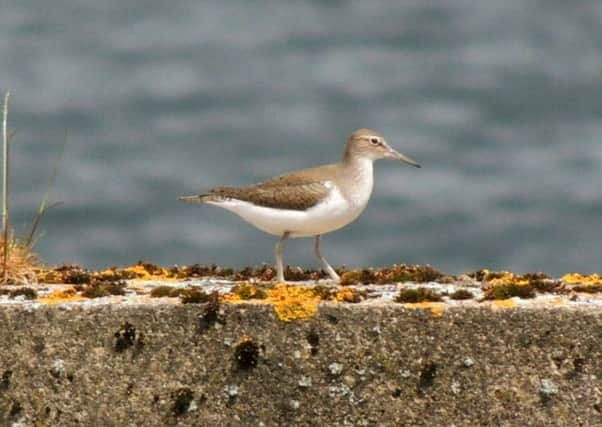Awaiting distinctive first call of spring from sandpipers - Roger Ratcliffe


“Ling tits,” I once heard him call meadow pipits, a reference to the small bird’s preferred moorland habitat, and from boyhood he had always known the skylark as a “laverock”, which apparently is derived from the old English word for lark, laewerce.
One afternoon, as we were following the River Wharfe upstream from Barden Bridge, he suddenly stopped and cocked an ear.
Advertisement
Hide AdAdvertisement
Hide Ad“There... did you hear that?” he half-whispered, and after a few seconds I listened to a shrill though almost musical burst of notes from somewhere along the riverbank. He said eventually, “It’s a summer snipe.”
Of course there is no such bird with that name, but I knew he must be referring to the elegant little brown and white common sandpiper which was now clearly visible on the other side of the Wharfe. Standing on an isolated stone at the edge of the main current, it seemed to vibrate with agitation as it uttered its call.
Over in Lancashire another local name, the dickie-di-dee, beautifully describes the common sandpiper’s repetitive cry, as does the killieleepie in Scotland, where in some areas it is also affectionately known as the little fiddler.
For me, hearing that call is often the final evidence of spring’s arrival in Yorkshire.
Advertisement
Hide AdAdvertisement
Hide AdThe bird migrates as far as South Africa in winter and returns north to breed along the upper reaches of rivers and beside less frequented lakes and reservoirs.
The date of its appearance in the UK can vary enormously but is usually in April. However, I once encountered a couple of bird in mid-March at Gouthwaite Reservoir in Nidderdale, and on a walk along the Wharfe last week I had cause to expect at least one common sandpiper to utter that evocative call as it flitted along the riverbank, since this year’s sightings have already begun to emerge further south.
Sadly, though, I was to be disappointed, and while other wading birds like curlews, oystercatchers and redshanks are now back in the Dales to start the nesting season my first common sandpiper of the year is still awaited.
As the name suggests, it frequents the sandy and muddy margins of rivers and lakes, where it wades in shallow water while probing for larvae and worms. It can sometimes be totally overlooked by birdwatchers but usually draws attention to itself if anyone gets uncomfortably close to its riverbank nest, delivering the lovely call while skimming along the surface of the water with motionless arched wings.
Advertisement
Hide AdAdvertisement
Hide AdUnfortunately, the common sandpiper is declining in the UK according to the British Trust for Ornithology. One reason advanced is that the acidification of rivers because of air pollution has reduced the aquatic insect life on which the bird depends. It has disappeared from rivers in the south, and the Yorkshire Dales and Pennines are now among the bird’s English strongholds.